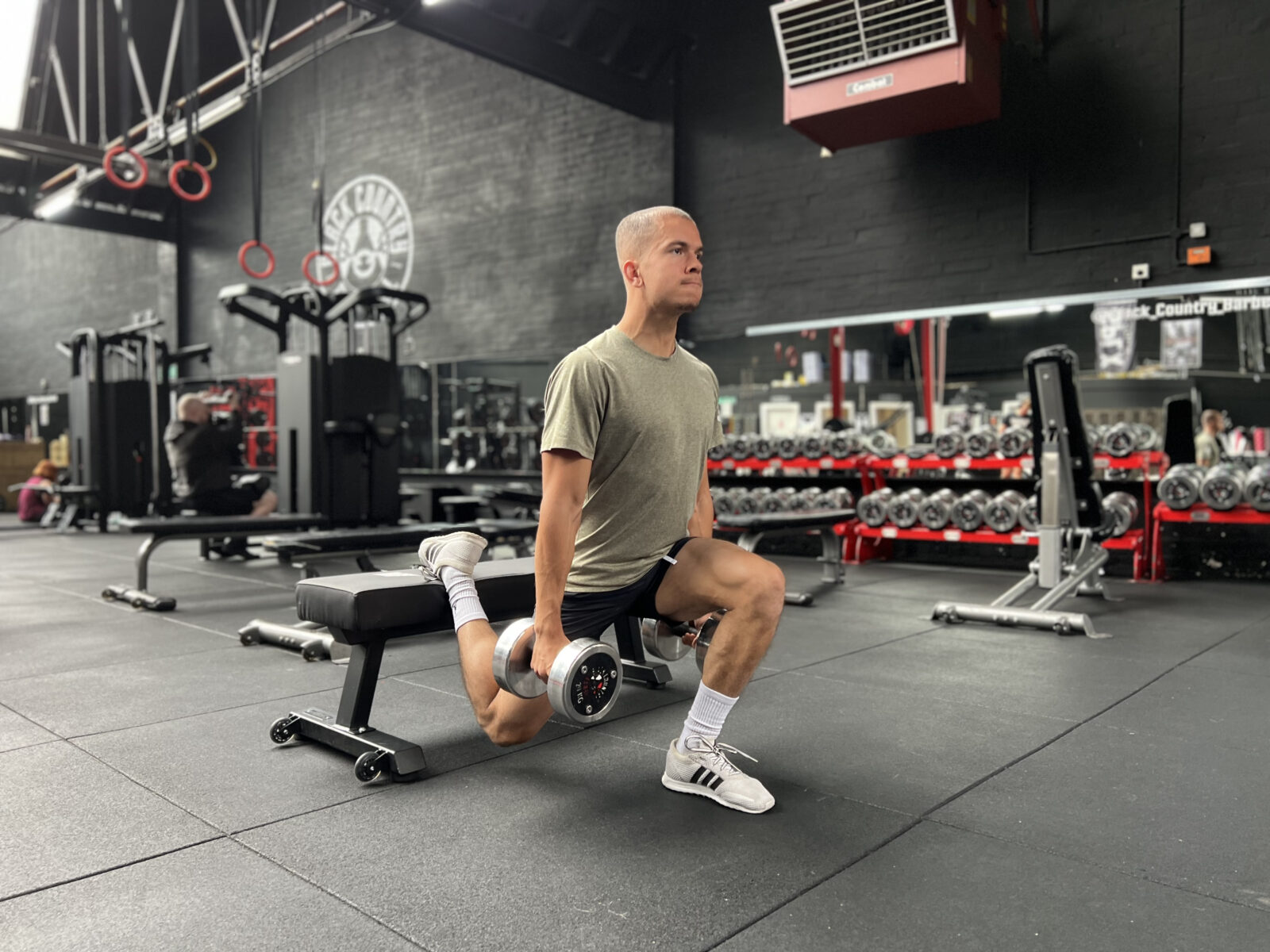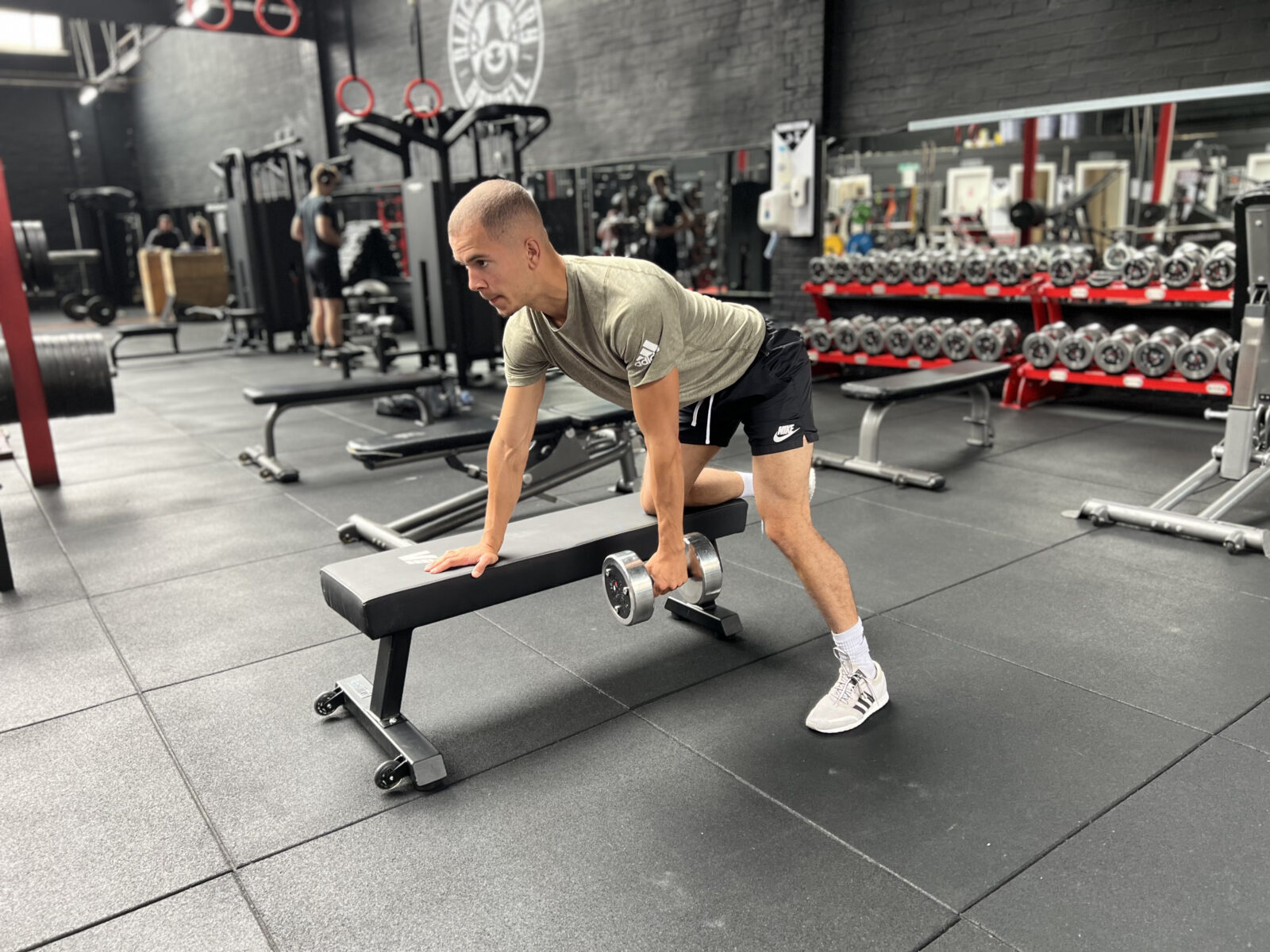Another find from deep in the vaults of Singletrack Towers. A quick history lesson. Chipps and Biff once published a photocopied Single Speed Zine called The Outcast. It was full…
Coach to the mountain biking stars, Alan Milway, brings you some exercises to help you assess just how much work you could be doing… We like how the introduction assumes you actually do preparation and training at all…
5 Exercises to self-assess your own strengths and weaknesses!
As we leave the warm summer months behind, there is the opportunity for us to review our riding and performance this year. There may have been key events you were training for, or simply trips away where riding volume was very high and the preparation for these trips to maximise enjoyment was key.
Looking back, you may see areas in fitness and preparation that worked very well, but also areas that caused you issues; pain, soreness, or lack of strength and power when needed. Often a simple review can help motivate and steer your plans to help you prepare for next season and make the necessary improvements.
As a coach working with professional mountain bike athletes, I will often use this period to review the season, and start to implement exercises to deal with any issues highlighted. For racers this is often injury rehabilitation. For example, Gee Atherton’s return to riding this year following his awful knife edge cliff fall, or Greg Minnaar’s approaching rehab and return from a broken neck in Val di Sole.
You will hopefully not have injuries as serious as these! But you may be suffering from an ongoing ‘niggle’, a previous injury that wasn’t rehabilitated properly, or an imbalance that you can’t quite pinpoint, but is affecting your riding.
Here are 5 exercises that are easy to implement and require minimal equipment. Here I am just using the Milway Performance weights bench and some dumbells. The exercises allow you to highlight any asymmetry or imbalance. Once highlighted, you can start to address these effectively.
1: Rear Foot Elevated Split Squat
How: Lift rear foot on to a bench for support, and keeping weight through the front leg, lower until you feel a stretch in your hip, or you touch rear knee to floor. Return to start position and repeat.
Why: This single leg exercise can highlight differences in stability, ankle mobility and also leg strength. We are looking at strength endurance, not maximum strength. You can test max strength in this way but it is an advanced exercise with much more risk!

Progress: Add weight by holding dumbells. See how many reps you can do at a set weight on each leg. We are not looking for a maximum weight lifted, but to see if one side fatigues more rapidly exercising in the 8-12 rep range.
Regress: You may find you can’t stablise well enough on the front foot, and this could be down to lack of ankle range. A regression is to lower back foot to floor and do a split squat or lunge.
2. Single Leg Glute Bridge
How: Lie on the floor, close to a bench and raise heels up on to the bench. Lift one leg off the bench, so weight is through one heel, and drive that heel in to the bench to lift hips off the floor. Try not to arch you back as you do this, but squeeze your bum to drive you up. Pause and lower.
Why: This exercise focuses on the posterior chain of hamstrings and glutes, and can quickly highlight a difference left to right. As you have to stabilise the body you also use the trunk here too. Mountain bike riders are often weak here and ‘stomp’ on the pedals, so this is effective in improving strength in this area.

Progress: Hold a sandbag or weights plate on your hip as you perform these, or move yourself further away from the box to target the hamstrings more.
Regress: If you wobble too much or find you cramp, put both heels on the bench and practice with both feet driving you up, or regress to the floor.
3. Single Arm Bench Press
How: Lie on a bench, bring feet under you for effective support. Hold one dumbbell and lower until the dumbbell just touches the side of your ribs. Drive up to straighten arm, pause and lower.
Why: Our dominant hand will do much more work day to day and often be stronger than our non dominant side. With many pressing movements (barbell bench, press ups etc) this imbalance is often hidden. However on the bike you need balanced control to stabilise you – landing a drop and collapsing on one side will make you veer off line! There is also a lot of trunk stability here as only one side is pressing so you must brace well.

Progress: Increasing the weight of the dumbbell – as with the split squats, work in the 8-12 rep range to start with, but this should be fatiguing, not just stopping at 12 for the sake of it!
Regress: Scale down in weight – if an athlete has a shoulder injury I will often use a Kettlebell held upside down, as this helps us challenge the shoulder stabilising muscles, not purely strength.
4. Dumbell Row
How: Set yourself a wide stance – one knee on the bench and the other leg outside hip width. This allows you to lean forward with a flat back and maintain this. Hold the dumbbell at arms length and imagine you are sawing a piece of wood – the movement is up and back in to the armpit. Control the lowering phase and repeat.
Why: As for dumbbell bench press, this helps you address upper body pulling asymmetry. This is often overlooked, but may explain pain in shoulder blade/ back, or even neck issues as a weak back tends to make the neck overwork.

Progress: Increase the load in the dumbbell, but maintain form! You don’t want to lower and then rapidly raise the chest to give the dumbbell more momentum!
Regress: Stand up and use a resistance band anchored to a frame to pull towards you. This is an early-stage rehab movement and will allow assessment at a lower level.
5. Side Plank Holds
How: Lie on the bench, hips at the top edge. Hook feet under bench to hold you steady, or have someone hold you feet down to stabilise you. Turn sideways, so shoulder and hips point up to the ceiling. Lower to horizontal so you are bracing yourself to maintain this position. Time how long you can hold this for!
Why: This is a challenging movement and will quickly highlight a difference in trunk strength – that may stem from an issue at the hips. We often move a lot in the sagittal plane (moving forward/ backward plane) so challenging strength in a different plane is often insightful. These differences can lead to other problems and pain, so it is very useful to highlight them!

Progress: If you can hold this for 60s or more each side, then try holding a 5kg weight when you do it – and then try pressing it out away from you!
Regress: A side plank from the floor is a much easier way to get to a similar position, although holding yourself on your elbow can actually cause your shoulder to fatigue quickly.
Alan Milway is a coach working who has worked with professional mountain bike racers for nearly 20 years. He has just launched a new venture making strength training equipment: www.milwayperformance.com
The STW staff are sheepishly trying out the exercises…be sure to let us know the results of your assessments!


You must be logged in to reply to this topic.